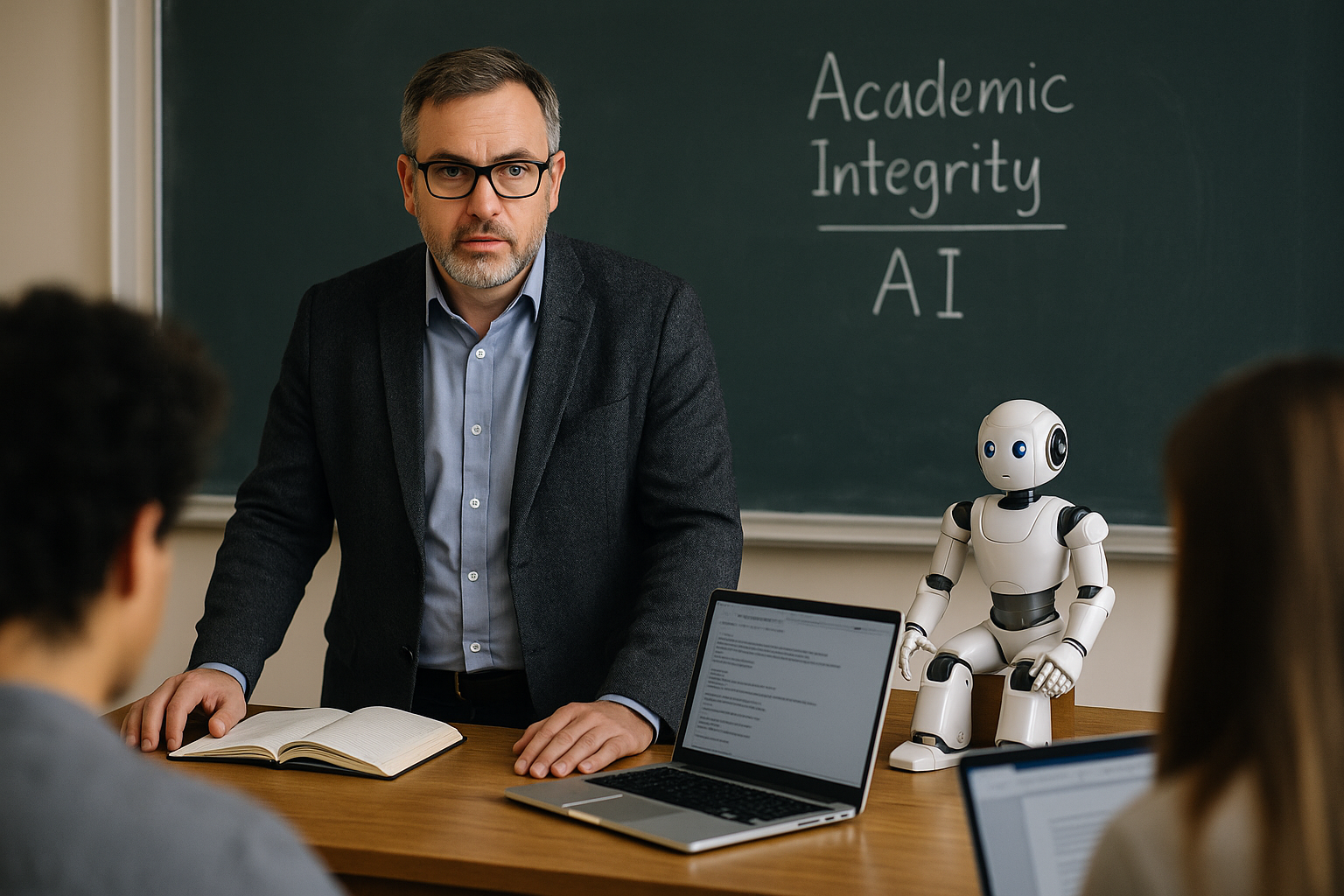Universities struggle to police AI use as academic integrity crisis deepens
The primary institutional concern identified in the study is the potential erosion of academic integrity due to student misuse of AI tools. With large language models capable of producing essays, solving problems, and even mimicking writing styles, universities fear that traditional assessment methods are becoming increasingly vulnerable. Over 24% of documented concerns relate directly to academic integrity violations, reflecting widespread apprehension that students may delegate assignments to AI systems rather than engage in critical, original thinking.

Higher education institutions worldwide are facing a fundamental dilemma: how to responsibly integrate AI tools without compromising the core values of academic integrity, learning authenticity, and assessment credibility. A new study published in World, titled “Responsible and Ethical Use of AI in Education: Are We Forcing a Square Peg into a Round Hole?” by Alexander Amigud and David J. Pell, explores this tension in depth through a multiple-case analysis of 50 universities across eight countries.
The study critically investigates how institutions are responding to the generative AI wave, revealing inconsistent policies, ambiguous guidelines, and an urgent need for coherent strategies. It underscores that the rapid adoption of tools like ChatGPT is outpacing the ability of universities to adapt their frameworks, raising risks around plagiarism, inequality, and assessment reliability.
What are universities most concerned about in the AI era?
The primary institutional concern identified in the study is the potential erosion of academic integrity due to student misuse of AI tools. With large language models capable of producing essays, solving problems, and even mimicking writing styles, universities fear that traditional assessment methods are becoming increasingly vulnerable. Over 24% of documented concerns relate directly to academic integrity violations, reflecting widespread apprehension that students may delegate assignments to AI systems rather than engage in critical, original thinking.
Institutions have attempted to respond in four main ways: redesigning assessments to be more AI-resistant, urging instructors to explicitly communicate expectations, incorporating AI-use citations into academic practice, and enhancing detection mechanisms for AI-generated content. Despite these efforts, detection technologies remain flawed, often inaccurate, biased against non-native English speakers, and potentially infringing on students' privacy and intellectual property rights.
The ethical conflict is compounded when AI is used for grading and feedback by instructors, yet students are penalized for similar usage. This highlights the blurred boundary between support and substitution, further complicating institutional responses.
How are institutions attempting to balance ethics and innovation?
The study found significant inconsistency in how universities interpret and apply AI guidelines. While some institutions, such as Concordia University and the University of North Carolina at Chapel Hill, permit the use of AI for brainstorming and outlining assignments, as long as the work remains the student's own, others impose outright bans or limit AI use to specific scenarios. The Australian National University, for example, cautions that AI-generated content should not be cited as academic sources, yet simultaneously acknowledges its research value.
This contradictory guidance reveals a deeper institutional tension. On one hand, universities are tasked with preparing students for an AI-driven workforce, encouraging digital literacy and practical engagement with emerging technologies. On the other, they are expected to uphold traditional values such as originality, critical reasoning, and independent problem-solving. Attempts to maintain both have resulted in fragmented policies that vary not only between institutions but often within departments or even individual instructors.
The lack of centralized oversight is particularly problematic. Instructors are frequently given discretion to determine AI-use policies in their classrooms. This decentralized approach has led to inconsistent applications, where identical coursework might have different rules depending on the instructor. This mirrors past inconsistencies in handling student collaboration and raises questions about fairness and policy credibility.
Notably, while academic integrity dominates institutional concerns, other issues, such as intellectual property infringement, algorithmic bias, and data privacy, were also acknowledged, albeit less frequently. Fears that AI might automate academic tasks and threaten job security were among the least cited concerns, despite their potential long-term impact on faculty roles.
What must higher education do to ensure responsible AI use?
The study’s findings point to a critical shortcoming in the academic response to generative AI: the absence of coherent, enforceable, and pedagogically aligned policies. The authors argue that relying on instructor discretion is insufficient and potentially dangerous, as it leads to inconsistency and undermines both student trust and academic standards.
They recommend several actions to reestablish institutional credibility and safeguard academic integrity:
-
Immediate Integration of Human-Proctored Assessments: Universities should implement at least some in-person examinations and viva voces to ensure that students can demonstrate authentic understanding without AI assistance.
-
Development of National or Institutional Policies: Rather than ad hoc classroom rules, universities need comprehensive, legally sound policies that define acceptable AI use, clarify ownership, and align with international standards such as those outlined by UNESCO.
-
Rethinking Assessment Models: Traditional essays and take-home assignments are vulnerable to AI misuse. Institutions must innovate assessment methods to prioritize student expression, real-time performance, and critical analysis, possibly through presentations, portfolios, and live assessments.
-
Enhancing Digital and AI Literacy: As AI becomes embedded in professional life, universities should focus on teaching students how to engage with these tools ethically, emphasizing responsibility over prohibition.
The researchers also stress that AI’s ability to increase personal productivity, both for students and faculty, should not be dismissed. However, this should not come at the expense of educational quality. They caution that without addressing the fundamental issue of what constitutes authentic learning in the AI age, academic institutions risk diminishing the value of their qualifications.
- READ MORE ON:
- generative AI in education
- AI and academic integrity
- ChatGPT in classrooms
- AI assessment challenges
- higher education and AI
- responsible AI use
- how universities are responding to AI tools like ChatGPT
- ethical use of generative AI in higher education
- impact of artificial intelligence on academic integrity
- how academic institutions are managing AI in education
- FIRST PUBLISHED IN:
- Devdiscourse










